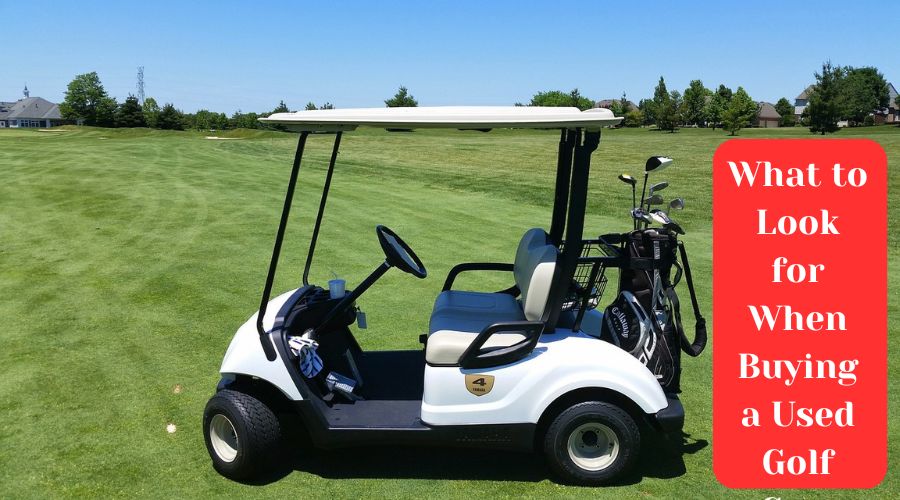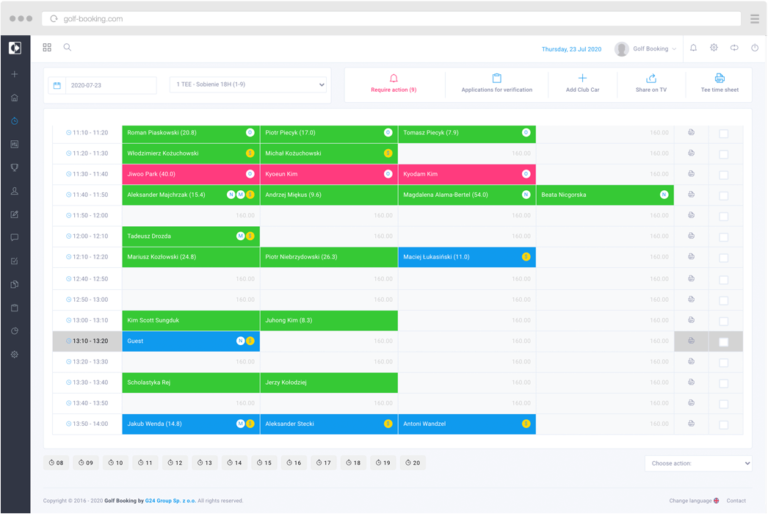When purchasing a used golf cart, examine its condition and battery life. Ensure the tires, body, and steering system are in good shape.
Buying a used golf cart can be a smart investment, especially in Austin, Texas, where golfing and leisure activities are popular. A pre-owned cart offers the advantage of lower costs compared to new models. Savvy shoppers know to look for signs of wear and maintenance history to gauge a cart’s value.
Key factors include the age of the golf cart, the condition of the body and tires, battery health, and how well the steering system functions. A thorough inspection and a test drive are crucial steps to assess the performance and reliability of the cart. With the right approach, buyers can find a great deal on a used golf cart that meets their needs without compromising on quality.
Contents
Factors To Consider Before Purchasing
Embarking on the quest for a used golf cart requires due diligence and an understanding of what to seek. A pre-owned golf cart can offer significant savings, but it’s crucial to assess the vehicle carefully before committing to a purchase. This section will explore the vital factors to consider ensuring a wise investment.
Budget Constraints
Establishing a budget is the first critical step. A clear budget will guide your choices and help narrow down the options. Consider both the upfront cost and potential maintenance when calculating your budget.
Used golf carts can vary widely in price, influenced by age, condition, and features. Setting a realistic budget keeps expectations in check and prevents overspending.
Usage Requirements
Understanding how you plan to use the golf cart is essential. Are you looking for something to navigate the greens, or do you need a vehicle for off-road adventures? Answering this question will shape your search and ensure you find a cart that meets your needs.
- Frequency of use: Daily drivers may require more robust features compared to occasional use.
- Terrain: Flat courses demand less than hilly or rough terrain.
- Passenger capacity: The number of seats may be crucial for family or group outings.
- Storage and payload: Ensure the cart can carry all necessary equipment.
Aligning your usage requirements with the cart’s specifications is a smart move. It ensures your chosen golf cart will perform as needed, without costly modifications or disappointments.
Physical Inspection
Before buying a used golf cart, a thorough physical inspection is key. Assess the cart’s overall condition to avoid costly repairs later. Let’s dive into specifics.
Body Condition
Start with the golf cart’s exterior. Check for:
- Scratches or dents on the body.
- Rust spots or paint damage.
- Consistency in color, indicating no major repairs.
- Frame integrity, ensuring no bends or cracks.
Tire Condition
Examine each tire for signs of wear:
- Look for adequate tread depth.
- Check for cracks or signs of aging.
- Ensure tires are properly inflated.
- Confirm that all tires match and are evenly worn.
Battery Health
The battery is the heart of an electric golf cart. Check the following:
| Aspect | What to Look For |
|---|---|
| Age | Batteries older than 5 years may need replacing soon. |
| Terminals | No corrosion or damage. |
| Voltage | Matches the required levels. |
| Water Level | Properly maintained and filled. |
Mechanical Inspection
Before you buy a used golf cart, a thorough mechanical inspection is essential. This check ensures that the cart functions well and is safe to use. Focus on the motor, brakes, and suspension systems.
Motor Performance
Start by examining the golf cart’s motor. A good motor should run smoothly and quietly. Listen for any strange noises like grinding or clicking. These sounds can indicate problems.
- Check the motor’s condition.
- Listen for unusual noises.
- Ensure smooth operation.
Braking System
The brakes are critical for safety. Test them to see if they stop the cart promptly and evenly. Also, inspect the brake pads and discs for wear and tear.
- Test the brake’s responsiveness.
- Inspect pads and discs for damage.
- Ensure brakes do not stick or squeal.
Suspension System
The suspension system affects how smooth the ride is. Check for signs of rust or damage on the shock absorbers. Make sure the golf cart handles bumps well during a test drive.
| Check Point | Details |
|---|---|
| Shock Absorbers | Look for rust or damage. |
| Ride Quality | Test on bumps and uneven surfaces. |
Documentation And History Check
Buying a used golf cart needs careful consideration. Start with the cart’s past. A thorough documentation and history check tells you about its life story. This step is crucial for ensuring a wise purchase. Let’s delve into what you must check.
Maintenance Records
Good maintenance extends a cart’s life. Look for detailed records. They should show regular servicing and part replacements. Such records help you predict future maintenance needs and costs.
- Service dates: Check for consistency.
- Parts changed: Look for quality brands.
- Repair notes: Seek clarity on issues fixed.
Previous Ownership
The number of past owners can impact the cart’s condition. A single previous owner often means better care. Multiple owners could signal a history of problems.
| Owner Count | Implications |
|---|---|
| One | Potentially well-maintained |
| Multiple | May have hidden issues |
Test Drive And Performance Evaluation
Embarking on a test drive is a crucial step in purchasing a used golf cart. It offers a firsthand experience of the cart’s performance. Observing how the cart handles and responds to various commands is essential. This evaluation ensures you invest in a reliable and efficient cart.
Acceleration And Speed
When you press the accelerator, take note of the cart’s responsiveness. A healthy cart should have a smooth and steady increase in speed. Watch for any hesitations or jerks which could signal potential issues.
- Check for consistent acceleration.
- Monitor the cart’s top speed.
- Listen for unusual noises during acceleration.
Turning Radius
A tight turning radius often indicates good maneuverability. During the test drive, execute sharp turns and assess how the cart manages. Smooth handling is a good sign, while any struggle or wide turns might raise concerns.
| Test | Observation | Acceptable Performance |
|---|---|---|
| Sharp Left Turn | Cart turns smoothly without resistance | Yes |
| Sharp Right Turn | Cart turns without hesitation | Yes |
Additional Features And Customization
When hunting for a pre-owned golf cart, go beyond the basics. Consider additional features and customization options. These can turn a simple cart into a stylish, comfortable ride. Extras often reflect the previous owner’s care and investment in the vehicle.
Seat Covers And Accessories
Seat covers and accessories add comfort and personality to a golf cart. Look for quality materials that withstand weather and wear. Check for:
- Durable fabric: Resists tears and fading.
- Comfort: Extra padding for a smoother ride.
- Design: Matches your style and taste.
Accessories like cup holders and storage nets offer convenience. Ensure they are intact and functional.
Custom Paint Jobs
A custom paint job can make your cart stand out. Look for:
| Aspect | Details to Consider |
|---|---|
| Quality | No peeling or cracking. Smooth finish. |
| Appearance | Colors that fit your preference. Unique designs. |
| Protection | Top coats to guard against scratches and UV damage. |
A well-done paint job suggests the cart received proper care. It also boosts its aesthetic value.
Negotiation And Pricing
Finding the right used golf cart requires smart negotiation and understanding pricing. Getting a fair deal is key. Let’s explore how to research the market value and identify potential bargaining chips.
Research Market Value
Before you start negotiating, know the golf cart’s worth. Use resources like classified ads, online marketplaces, and golf cart dealers to check prices. Look for models similar to the one you’re interested in.
- Compare prices of similar golf carts.
- Consider the year, make, model, and condition.
- Adjust for any upgrades or accessories.
Potential Bargaining Chips
When you’re ready to buy, use what you’ve learned to your advantage. Here’s how:
| Bargaining Chip | How to Use It |
|---|---|
| Cart Age | Older carts might have lower prices. |
| Battery Condition | Weak batteries can lead to price reductions. |
| Physical Condition | Dents or rust can be negotiation points. |
| Accessories | Missing features can lower the cost. |
Remember to stay firm but polite. Show that you know the cart’s value. This will help you get the best deal.
Finalizing The Purchase
Finalizing the purchase of a used golf cart is as important as the initial inspection. It’s the stage where you ensure everything is in order before taking ownership. Pay close attention to the transfer of ownership and warranty details. This will save you from future headaches and unexpected costs.
Transfer Of Ownership
Once you decide on a golf cart, transferring ownership is the next step. Make sure to get all the paperwork right. Here’s a checklist:
- Title: Confirm the seller has a clear title.
- Bill of Sale: Get a signed bill of sale. It should list the price, date, and both parties’ details.
- Registration: Check local laws for golf cart registration needs.
- Receipt: Ask for a purchase receipt. It’s proof of payment.
Warranty Or Return Policy
Understand the warranty or return policy before you buy. This ensures you are covered if issues arise. Ask these questions:
| Question | Why It’s Important |
|---|---|
| Is there a warranty? | Protects against defects or problems. |
| How long is the warranty? | Tells you the coverage duration. |
| What does the warranty cover? | Know what parts and services are included. |
| Is there a return policy? | Allows you to return the cart if it doesn’t meet expectations. |
Always get warranty and return policy details in writing. Keep them safe for future reference.
Frequently Asked Questions
Is Buying A Used Golf Cart A Good Idea?
Buying a used golf cart can be cost-effective and a smart investment if you inspect its condition, battery life, and maintenance history.
What Is The Life Expectancy Of A Golf Cart?
The life expectancy of a golf cart typically ranges from 5 to 10 years, depending on maintenance and usage. Regular upkeep can extend its lifespan further.
How Many Hours Is A Lot For A Golf Cart?
A golf cart with over 1,000 hours is often considered high for a used model.
How Many Miles Should A Golf Cart Go?
A golf cart should typically cover about 30 to 40 miles on a single charge or a full tank of gas.
Conclusion
Selecting the right used golf cart is crucial for both enjoyment and practicality. Remember to prioritize condition, performance, and maintenance history. Ensure the batteries are robust and the frame is sound. Trustworthiness of the seller is key; don’t hesitate to ask questions.
By keeping these tips in mind, you’ll drive away with a great deal on a reliable golf cart. Happy golfing!





